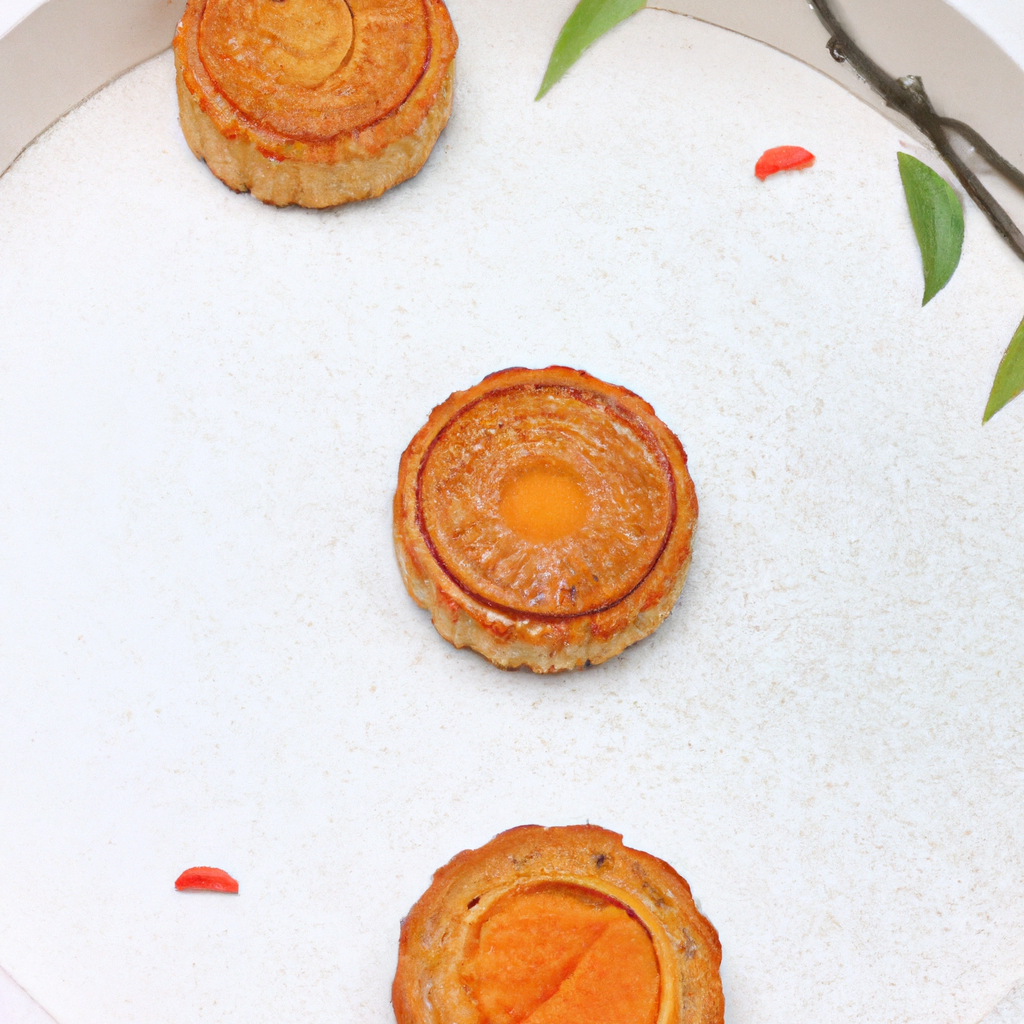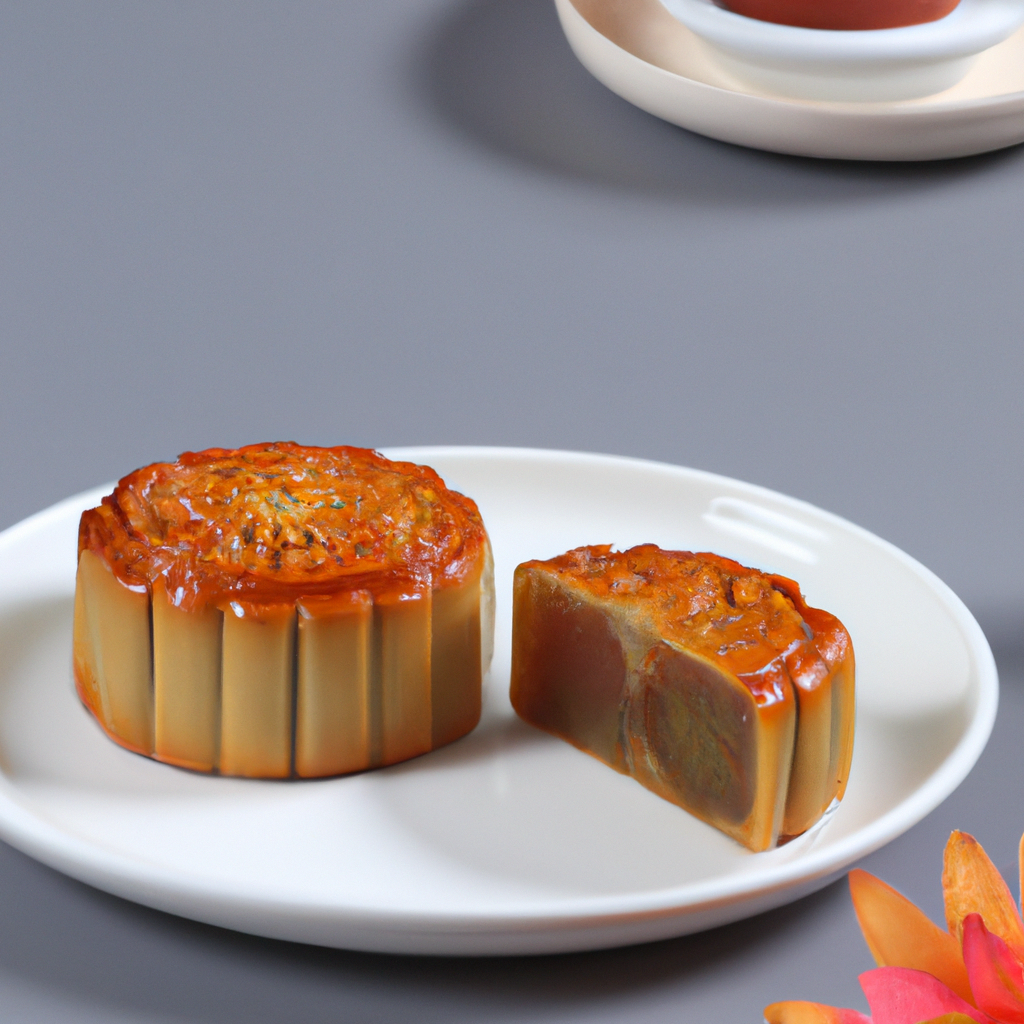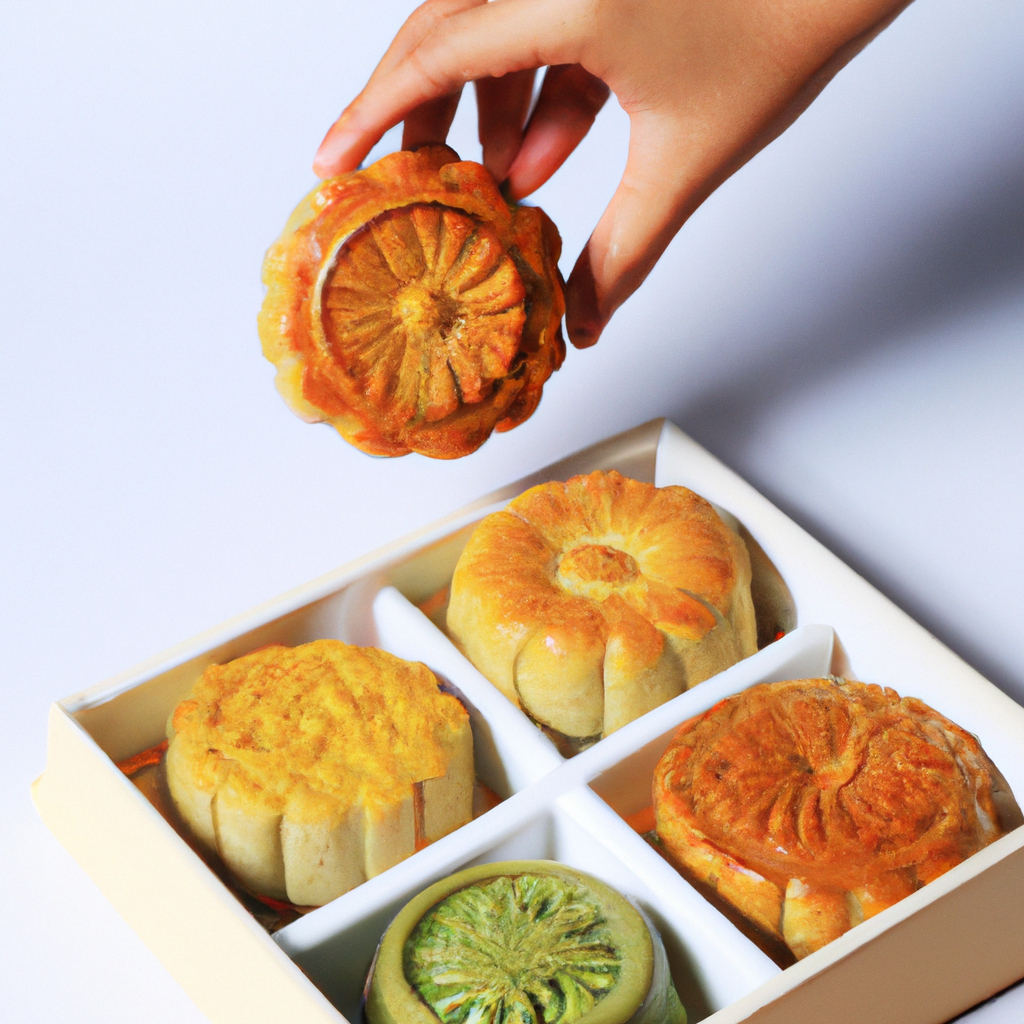
The Mid-Autumn Festival, also known as the Moon Festival, is one of the most important traditional festivals celebrated in many Asian countries, including China, Vietnam, and Singapore. It takes place on the 15th day of the eighth month in the lunar calendar, when the moon is believed to be at its fullest and brightest. This festival is a time for families to gather, give thanks, and celebrate the harvest season.
The Mid-Autumn Festival is deeply rooted in Chinese culture and has been celebrated for over a thousand years. It is a time to express gratitude for the abundance of the harvest and to pray for good fortune in the coming year. The festival also holds a special place in the hearts of the Chinese diaspora as a way to connect with their cultural heritage.
Mooncakes are the quintessential food of the Mid-Autumn Festival. These round pastries are traditionally filled with lotus seed paste and salted egg yolks, symbolizing the reunion of families. The golden brown crust represents the full moon, while the salted egg yolks symbolize the moon's brightness. Mooncakes are not only delicious treats, but they also carry a deep cultural significance.
The Mid-Autumn Festival can be traced back to ancient China and has evolved over time through a combination of historical events, legends, and folklore.
The Mid-Autumn Festival has its roots in the Tang Dynasty (618-907 AD) when it was customary for the royal court to hold elaborate ceremonies to worship the moon and pray for a bountiful harvest. Over the centuries, the festival became more widespread and was adopted by the general population as a way to celebrate the harvest and enjoy the beauty of the moon.
There are several legends and folklore associated with the Mid-Autumn Festival. One of the most well-known stories is the tale of Chang'e, the Moon Goddess. According to legend, Chang'e consumed a pill of immortality and ascended to the moon, where she resides to this day. Another popular legend is the story of Houyi, a skilled archer who shot down nine of the ten suns that were scorching the earth. To thank him, the Queen Mother of the West presented him with the elixir of immortality, which he hid from his wife, Chang'e. When she discovered the elixir, she consumed it and floated to the moon.
The Mid-Autumn Festival is a time for families to come together, honor their ancestors, and celebrate their cultural heritage. Here are some of the traditional customs and celebrations associated with the festival:
Family is at the heart of the Mid-Autumn Festival. It is a time for relatives to come together and enjoy a festive meal, exchange gifts, and catch up with one another. Family members often travel long distances to be together during this special time.
Lantern processions are a highlight of the Mid-Autumn Festival. People carry brightly lit lanterns of various shapes and sizes, parading through the streets, parks, and other public spaces. The lanterns come in all forms, from traditional paper lanterns to intricate and elaborate designs.
One of the most cherished traditions of the Mid-Autumn Festival is moon-watching. Families gather outdoors, often in gardens or parks, to admire the full moon. It is believed that the moon is at its brightest and brings good luck and prosperity.
The moon holds great symbolism in Chinese culture, and its significance is heightened during the Mid-Autumn Festival.

The moon is seen as a symbol of harmony and unity. Its round shape represents completeness and wholeness, while its gentle and calming presence evokes feelings of peace and tranquility. The moon also plays a role in the Chinese lunar calendar, guiding agricultural activities and marking the changing seasons.
During the Mid-Autumn Festival, families set up altars or tables with offerings to worship the moon. These offerings typically include fruits, mooncakes, and burning incense. Moon worship is a way to express gratitude for the abundance of the harvest and to seek blessings for the future.
Mooncakes come in a variety of flavors and styles, each with its own regional specialties. Here is a classic mooncake recipe that you can try at home:
The traditional mooncake is made with lotus seed paste and salted egg yolks. Other common ingredients include melon seeds, almonds, and red bean paste. The crust is made from a combination of flour, golden syrup, and vegetable oil.
1. Mix the flour, golden syrup, and vegetable oil in a bowl until well combined. Let the dough rest for about 30 minutes.
2. Divide the lotus seed paste into small portions and shape them into balls. Place a salted egg yolk in the center of each ball and wrap the paste around it.
3. Divide the dough into small portions and flatten them with your hands. Place a lotus seed paste ball in the center and wrap the dough around it, ensuring it is fully sealed. Press the mooncake into a mold to create decorative patterns on its surface.
4. Preheat the oven to 180°C (350°F). Place the mooncakes on a baking tray lined with parchment paper and bake for about 15-20 minutes until golden brown.
5. Let the mooncakes cool completely before enjoying them. They can be stored in an airtight container for up to a week.
While the classic mooncake is still widely enjoyed, there are many variations and regional specialties available today. Some popular flavors include green tea, black sesame, and durian. There are also snow skin mooncakes, which have a soft and chewy texture and do not require baking.
As with any traditional food, mooncakes have evolved over time to cater to changing tastes and preferences.

Modern mooncakes come in a wide range of flavors, including exotic combinations like matcha and red bean, chocolate and salted caramel, and even truffle-infused mooncakes. These unique flavors cater to a younger generation and reflect the changing culinary landscape.
Mooncakes are no longer limited to the traditional round shape. They now come in various shapes and sizes, from square and rectangular to animal-shaped and even character-themed mooncakes. These creative designs add a touch of fun and excitement to the festival.
Mooncakes are delicious treats, but they are also high in calories and sugar. Here are some tips for enjoying mooncakes in a balanced manner:
Mooncakes are typically high in carbohydrates, fats, and sugars. They are also calorie-dense, with one mooncake containing around 500-800 calories. It is important to consume them in moderation and balance them with other nutritious foods.
1. Opt for smaller-sized mooncakes or share them with others to reduce calorie intake.

2. Choose mooncakes with healthier fillings, such as nuts, fruits, or low-sugar options.

3. Balance your overall diet by incorporating plenty of fruits, vegetables, and lean proteins.
Tea is an essential part of the Mid-Autumn Festival, and it is often enjoyed alongside mooncakes. Here are some traditional tea pairings:
1. Pu-erh Tea: This earthy and robust tea complements the rich and sweet flavors of traditional mooncakes.
2. Green Tea: The light and refreshing taste of green tea helps cleanse the palate and balance out the richness of the mooncakes.
3. Oolong Tea: With its floral and fruity notes, oolong tea enhances the flavors of mooncakes without overpowering them.
Feel free to experiment with different tea flavors and discover your own unique pairings. Some people enjoy black tea with chocolate mooncakes or floral teas with fruity mooncakes. The possibilities are endless!
Mooncakes hold deep cultural significance and are more than just a festive treat.
Mooncakes are often exchanged as gifts between family members, friends, and business associates during the Mid-Autumn Festival. They serve as symbols of unity and harmony, bringing people together in celebration.
Mooncakes have had a profound influence on Chinese culture and have spread to other parts of the world with Chinese diaspora communities. They are now enjoyed by people of different ethnicities and nationalities, contributing to the richness and diversity of global culinary traditions.
The Mid-Autumn Festival is not only celebrated in China but also in many other countries with Chinese communities.
In Vietnam, the Mid-Autumn Festival is known as Tết Trung Thu and is celebrated with lion dances, lantern processions, and moon-watching activities. In Singapore, the festival is marked by vibrant street performances and cultural events.
The Mid-Autumn Festival has become a multicultural celebration in many countries, with people from different backgrounds joining in the festivities. It is a testament to the festival's universal appeal and its ability to bring people together.
The Mid-Autumn Festival has its roots in ancient Chinese mythology and folklore. It is associated with the story of Chang'e, the Moon Goddess, and the tale of Houyi, the skilled archer.
Mooncakes are traditionally round to symbolize completeness and unity. The shape also represents the full moon during the Mid-Autumn Festival.
Yes, there are vegetarian and vegan mooncake options available. These mooncakes are made without animal products and often use plant-based fillings such as red bean paste, lotus seed paste, or taro.
When choosing mooncakes, consider the recipient's preferences and dietary restrictions. Look for reputable brands or bakeries known for their quality and craftsmanship. It is also helpful to read reviews or seek recommendations from friends or family.
Eating mooncakes is not a requirement for celebrating the Mid-Autumn Festival. However, they are an integral part of the festival's traditions and a delicious way to experience the cultural significance of this special occasion.
The Mid-Autumn Festival is a time of joy, togetherness, and reflection. It is an opportunity to celebrate our cultural heritage, express gratitude, and strengthen family bonds. By participating in and appreciating the traditions of the festival, we can foster a sense of unity and preserve our cultural identity for future generations.
1. "Mid-Autumn Festival." Chinese American Family. https://chineseamericanfamily.com/mid-autumn-festival/
2. "Mid-Autumn Festival." Travel China Guide. https://www.travelchinaguide.com/essential/holidays/mid-autumn-festival.htm
3. "Celebrating the Mid-Autumn Festival." National Geographic. https://www.nationalgeographic.com/travel/article/celebrating-the-mid-autumn-festival